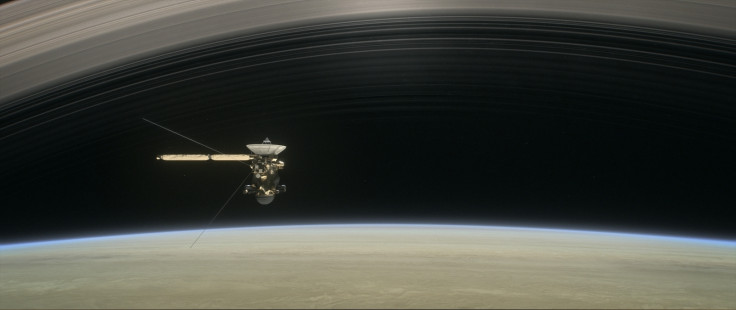Cassini approaching its final five orbits before diving head first into Saturn
Last mission will take it to the upper parts of Saturn's atmosphere, closest it has ever been to the gas giant.

Cassini has entered its final stages where its last mission will be to make five orbits around Saturn, diving in close to the planet's upper atmosphere.
Cassini will begin the dive on Sunday, 13 August and by Monday, it will fly by Saturn's upper atmosphere where it will pass by air dense enough to require the use of its rocket thrusters to maintain stability, according to Nasa.
"Cassini's Titan flybys prepared us for these rapid passes through Saturn's upper atmosphere," said Earl Maize, Cassini project manager at Nasa's Jet Propulsion Laboratory (JPL) in California.
Scientists are expecting Cassini to use only about 10% to 60% of its thrusters for stability during this flight. If it needs more than that to stay on course, the spacecraft will increase altitude to fly above the turbulence.
During these orbits, Cassini will be flying between 1,630 and 1,710 km above Saturn's cloud tops, according to Nasa. If the pop-up is needed, it will move up by 200km. Conversely, if the pop-up is not needed and if the air is not dense enough, they will conduct a pop-down manoeuvre, dropping the craft further into Saturn's atmosphere by 200km.
Through these orbits, which will be the closest anything man-made from Earth has ever reached Saturn, Cassini will be sending back data through its ion and neutral mass spectrometer offering more insight into the planet's atmosphere.
"As it makes these five dips into Saturn, followed by its final plunge, Cassini will become the first Saturn atmospheric probe," said Linda Spilker, Cassini project scientist at JPL. "It's long been a goal in planetary exploration to send a dedicated probe into the atmosphere of Saturn, and we're laying the groundwork for future exploration with this first foray," she added.
Cassini's other instruments will continue to collect and send highly detailed information about the planet's atmosphere, its auroras, surface temperature as well as its vortexes observed at Saturn's poles. It will also be able to peer deep into its atmosphere using radar to pick up "features" that are as small as 16 miles wide, according to Nasa.
The final swan dive will begin a month later on 11 September where an encounter with Titan, Saturn's largest moon, will work like a "gravitational version" of a large pop-down manoeuvre and Cassini's path will be bent in towards the planet by 15 September. This plunge will go on for a half orbit during which time Cassini will point all its antennae towards the earth, constantly transmitting data, says Nasa.
After a point where atmospheric density reaches twice what of what Cassini is expected to encounter in its August 14 passes, thrusters will not be able to control the craft and contact will be permanently lost. It will burn out like a meteor, marking the end of a 20-year mission that started in 1997.
© Copyright IBTimes 2025. All rights reserved.





















